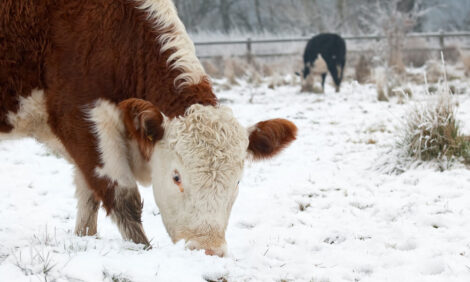



Getting diets right could help raise dairy cow fertility rates
UK - Breeding and genetics may be getting much of the blame for current poor dairy cow fertility, but changes to animal feeding diets could go a large part of the way to correcting it.BOCM Pauls' Wynn Morris told delegates at the British Cattle Conference, Shropshire that a typical mating period currently resulted in 40% of cows pregnant, 10% fertility failure, 40% early embryo loss and 10% late embryo loss or abortion. "It's the 40% early embryo loss which is most worrying as this leads to cows cycling irregularly."
However, reducing calving interval by just one month from 13 months to 12 months results in a 7% increase in milk yield over three lactations, he explained. "We've bred cows with a willingness to milk, leading to a situation where cows are giving 'credit card milk', whereby they milk off their backs for a long period early in lactation.
"This results in negative energy balance, with many cows losing more than one body condition score in the first month after calving. This means they are losing at least 42kg of bodyfat and this has to be paid back somewhere. Fertility is the cost."
Commenting on a number of trials, Mr Morris said a study to assess egg quality had found that low starch diets led to more better quality eggs being produced. "Insulin levels in diets also have a major role to play and differentiating diets on insulin level has been found to increase pregnancy rate by 33%.
Diets
"Feeding cows solely a cycling diet which is high in insulin led to 27% of cows being in-calf at 120 days post calving, feeding solely a mating diet low in insulin led to the same pregnancy rate. The same was true when cows were fed a mating diet until the first progesterone rise followed by a cycling diet."However, feeding a cycling diet until the first progesterone rise followed by a mating diet led to 60% of cows being in-calf at 120 days post-calving."
Source: Farmers Weekly Interactive


